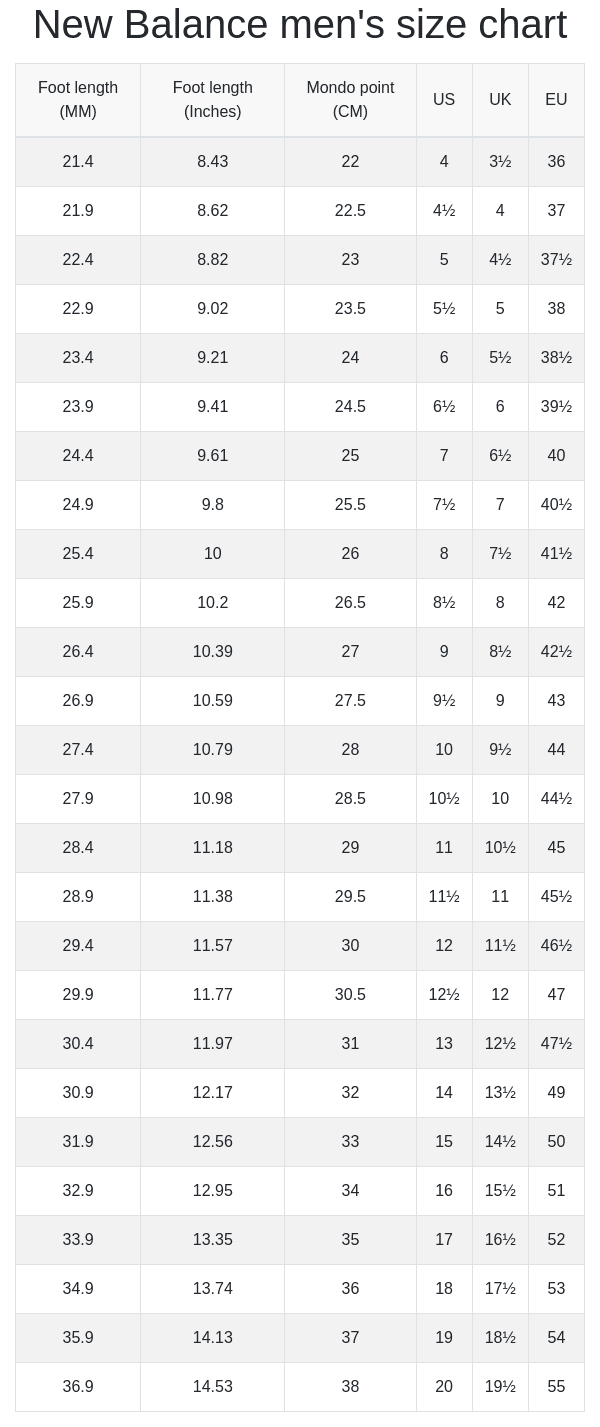Women's Shoe Size Converter Guide

Converting women’s shoe sizes can be a daunting task, especially when shopping online or trying to find the perfect fit across different brands and styles. The complexity of shoe sizing lies in the various measurement systems used around the world, including the US, UK, EU, and others. Understanding these systems and how to convert between them is crucial for ensuring a comfortable and proper fit. This comprehensive guide will delve into the world of women’s shoe sizes, providing a detailed converter, explanations of the different sizing systems, and practical advice on how to use them effectively.
Introduction to Women’s Shoe Sizing Systems
Women’s shoe sizes vary significantly across different regions, with the most common systems being the US, UK, EU, and Japanese sizes. Each system has its unique measurements and size increments, making direct conversions challenging without a reference guide.
US Sizes: The US sizing system is based on the length and width of the foot. It starts from size 4 and goes up to size 16, although sizes larger than 12 are less common. The system also includes half sizes and width fittings such as narrow, medium, and wide.
UK Sizes: Similar to the US, but with a different scale. UK sizes are also based on length and sometimes width, but the numbers correlate differently to foot length compared to the US system.
EU Sizes: The EU uses a numbering system that directly correlates to the last length (the internal measurement of the shoe) in centimeters. This system is considered more standardized but still has variations between brands, especially regarding width.
Japanese Sizes: Japan uses its unique sizing system, which is based on the length of the foot in centimeters. However, the correlation between foot length and shoe size can vary, and conversions might not always be straightforward.
Women’s Shoe Size Conversion Guide
Using the following tables, you can easily convert between different sizing systems. Remember, these are general guidelines, and the perfect fit can vary between brands and even styles within the same brand.
US to UK Conversion
| US Size | UK Size |
|---|---|
| 4 | 2 |
| 4.5 | 2.5 |
| 5 | 3 |
| 5.5 | 3.5 |
| 6 | 4 |
| 6.5 | 4.5 |
| 7 | 5 |
| 7.5 | 5.5 |
| 8 | 6 |
| 8.5 | 6.5 |
| 9 | 7 |
| 9.5 | 7.5 |
| 10 | 8 |
| 10.5 | 8.5 |
| 11 | 9 |
| 11.5 | 9.5 |
| 12 | 10 |

US to EU Conversion
| US Size | EU Size |
|---|---|
| 4 | 34 |
| 4.5 | 34.5 |
| 5 | 35 |
| 5.5 | 35.5 |
| 6 | 36 |
| 6.5 | 36.5 |
| 7 | 37 |
| 7.5 | 37.5 |
| 8 | 38 |
| 8.5 | 38.5 |
| 9 | 39 |
| 9.5 | 39.5 |
| 10 | 40 |
| 10.5 | 40.5 |
| 11 | 41 |
| 11.5 | 41.5 |
| 12 | 42 |
UK to EU Conversion
| UK Size | EU Size |
|---|---|
| 2 | 34 |
| 2.5 | 34.5 |
| 3 | 35 |
| 3.5 | 35.5 |
| 4 | 36 |
| 4.5 | 36.5 |
| 5 | 37 |
| 5.5 | 37.5 |
| 6 | 38 |
| 6.5 | 38.5 |
| 7 | 39 |
| 7.5 | 39.5 |
| 8 | 40 |
| 8.5 | 40.5 |
| 9 | 41 |
| 9.5 | 41.5 |
| 10 | 42 |
How to Use the Conversion Guide Effectively
While the conversion tables provide a good starting point, achieving the perfect fit requires more than just converting sizes. Here are some tips to keep in mind:
Measure Your Feet: Before converting sizes, ensure you know your foot length and width. The best time to measure is at the end of the day when your feet are at their largest.
Consider the Brand: Different brands may have slightly different measurements for the same size. If you’re familiar with how a particular brand fits, use that as a reference point.
Read Reviews: Check reviews from other customers, especially those with similar foot shapes or issues (like narrow or wide feet), to get a better idea of how a shoe fits.
Try Before You Buy: If possible, try on shoes before purchasing, especially if it’s a brand or style you’re new to.
Conclusion
Finding the right women’s shoe size, especially when navigating between different international sizing systems, can seem overwhelming. However, with the right guide and a bit of patience, you can ensure a comfortable and properly fitting shoe every time. Remember, while size conversions can give you a good starting point, personal foot measurements and brand specifics play a significant role in achieving the perfect fit. Happy shopping!
How do I measure my foot for shoe sizing?
+To measure your foot, place a piece of paper on the floor against a wall. Stand on the paper with your heel against the wall and mark the longest point of your foot. Measure the distance from the wall to the mark. Do this for both feet and use the larger measurement to determine your size. It’s best to do this at the end of the day when your feet are at their largest.
Why do different brands have varying fits for the same size?
+Different brands may use different lasts (the model or shape of the shoe) when manufacturing, which can result in varying fits even for the same size. Additionally, material, design, and intended use of the shoe can also affect how a size fits.
Can I use shoe size conversion charts for children’s and men’s sizes as well?
+Yes, similar conversion charts exist for children’s and men’s shoe sizes. However, keep in mind that just like women’s sizes, there can be variations between brands and styles.



